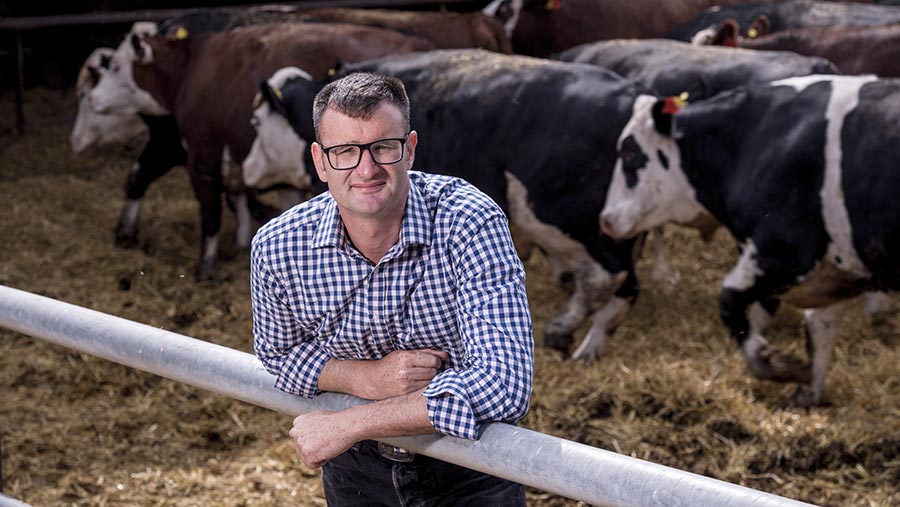Farmer Focus: Hoping satellite tech cuts fertiliser spend
 Doug Dear © Jim Varney
Doug Dear © Jim Varney Endless rain hasn’t allowed much farming lately. Winter barley looks fairly good, winter wheat looks variable and is tillering out, but the oilseed rape had its feet in water for too long, so we will replace it with spring oats.
There’s about 4,000t of muck stacked ready for spreading when conditions allow.
We hope to get the variable-rate technology working properly on the Richard Western FBS 16, tailoring quantities to soil-tested indexes and crop needs to achieve efficient fertiliser use, reduce costs and sequester carbon.
See also: Big savings in fertilisers can be made by utilising manures
Another rollout for this season is variable-rate fertiliser spreading, again using soil index data, but combined with data captured by OneSoil, which measures green area index (normalised difference vegetation index).
OneSoil processes images from the Copernicus satellite that circles the earth, and uses them to monitor crop progress (when it’s not cloudy).
Mapping we’ve done [so far] shows the fitter and poorer areas of fields. From this, applications can be adjusted via data collected by the satellite.
These are loaded onto a dongle that talks to a KV Geospreader. The theory is that we should cut fertiliser, accurately place product, and reduce overall tonnage (considering the amount of muck we apply).
So, hopefully, no flat corn this year.
That said, our first application was late and clashed with our second, so we are going “old school” and home-blending two different products in the yard with the JCB, giving it a good stir up and then bucketing it into the spreader.
If I’m going to make ruts, I’m only going with one pass.
Our new cattle shed has been like an episode of Grand Designs.
We are over budget before we have got out of the ground, partly because I have built in an extra 850mm of flood resilience to finished floor level, which required a substantial amount of extra fill.
Work had to happen in the wet, but time and tide wait for no man, and I can’t miss my erection date.
Hats off to the power of social media, Farmers Weekly’s Abi Kay and the British Farming Union, for helping overturn the Greener Farms Commitment.
I think we may have won the battle, but we haven’t won the war.

